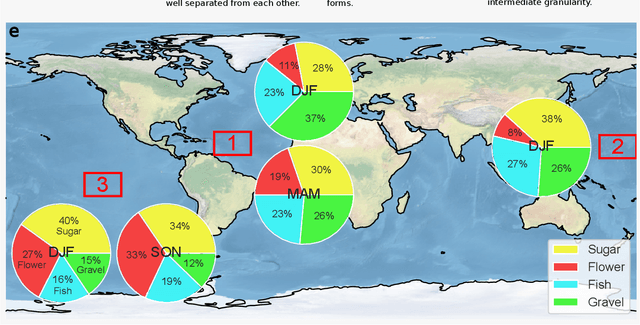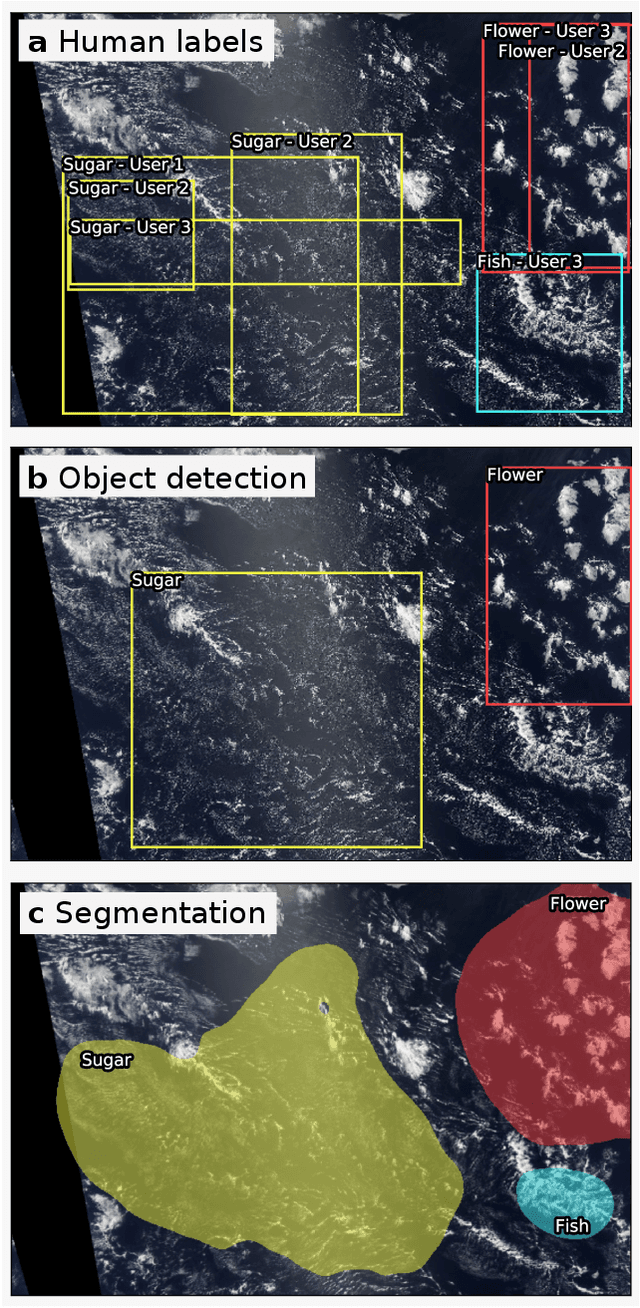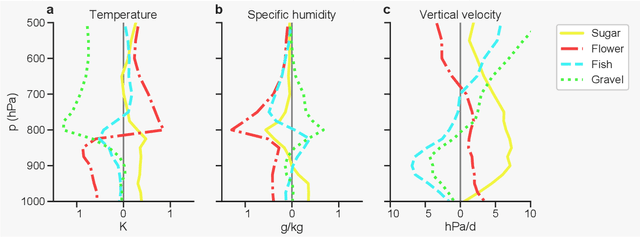Bjorn Stevens
Earth Virtualization Engines -- A Technical Perspective
Sep 16, 2023Abstract:Participants of the Berlin Summit on Earth Virtualization Engines (EVEs) discussed ideas and concepts to improve our ability to cope with climate change. EVEs aim to provide interactive and accessible climate simulations and data for a wide range of users. They combine high-resolution physics-based models with machine learning techniques to improve the fidelity, efficiency, and interpretability of climate projections. At their core, EVEs offer a federated data layer that enables simple and fast access to exabyte-sized climate data through simple interfaces. In this article, we summarize the technical challenges and opportunities for developing EVEs, and argue that they are essential for addressing the consequences of climate change.
Combining crowd-sourcing and deep learning to understand meso-scale organization of shallow convection
Jun 05, 2019



Abstract:The discovery of new phenomena and mechanisms often begins with a scientist's intuitive ability to recognize patterns, for example in satellite imagery or model output. Typically, however, such intuitive evidence turns out to be difficult to encode and reproduce. Here, we show how crowd-sourcing and deep learning can be combined to scale up the intuitive discovery of atmospheric phenomena. Specifically, we focus on the organization of shallow clouds in the trades, which play a disproportionately large role in the Earth's energy balance. Based on visual inspection four subjective patterns or organization were defined: Sugar, Flower, Fish and Gravel. On cloud labeling days at two institutes, 67 participants classified more than 30,000 satellite images on a crowd-sourcing platform. Physical analysis reveals that the four patterns are associated with distinct large-scale environmental conditions. We then used the classifications as a training set for deep learning algorithms, which learned to detect the cloud patterns with human accuracy. This enables analysis much beyond the human classifications. As an example, we created global climatologies of the four patterns. These reveal geographical hotspots that provide insight into the interaction of mesoscale cloud organization with the large-scale circulation. Our project shows that combining crowd-sourcing and deep learning opens new data-driven ways to explore cloud-circulation interactions and serves as a template for a wide range of possible studies in the geosciences.
 Add to Chrome
Add to Chrome Add to Firefox
Add to Firefox Add to Edge
Add to Edge